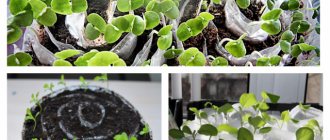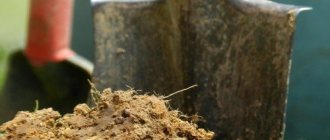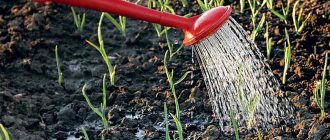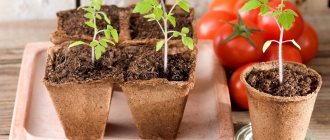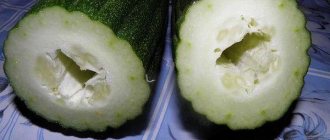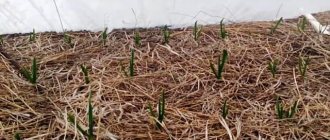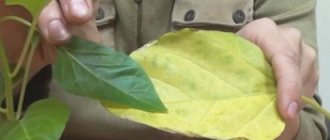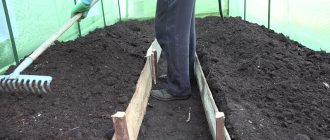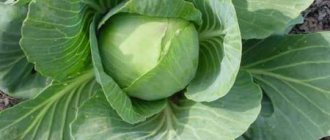In modern gardening, there are many useful devices, fertilizers and additional components for the successful cultivation of plants in garden plots. Gardeners know that to get a good harvest, it is necessary that the soil is not only fertile, but also sufficiently moisture-absorbing, loose and breathable. Using agrovermiculite for growing plants in your summer cottage will help you achieve good results in obtaining a rich harvest.
Characteristics of natural material
Vermiculite is a naturally occurring mineral that forms in the earth's crust. Due to its origin, this additive is considered environmentally friendly and safe for use in growing plants. This is especially important when growing vegetables and fruits on your own summer cottage. After all, it is not enough to get a rich harvest at the end of the season; it is also important that it is organically pure, which is important for human health.
In order for vermiculite to be used in growing plants, it is first exposed to high temperatures . With this treatment, the mineral becomes crumbly and light.
Vermiculite chips are used in landscape design as decorative mulch. For this purpose, it is not subjected to heat treatment. The colors of the crumbs can be different shades. There are golden, brown, yellow, green tints of colors.
Composition and properties of vermiculite
Vermiculite contains many microelements for the full growth and development of plants. These include:
- potassium;
- magnesium;
- silicon;
- iron;
- aluminum;
- calcium oxide.
So, it is known that the composition of vermiculite is rich in elements that are so necessary for plants to develop . But this is not the last quality for which gardeners love vermiculite so much and are happy to use it on their plots.
Due to the fact that the surface of the mineral has a scaly structure, the component improves soil aeration and is an excellent soil loosener. This means that the soil where agrovermiculite is added becomes looser and a large amount of air is retained in it. And also the soil retains the moisture needed by plants much better. A hard crust does not form on the soil surface, which helps to clog soil pores and prevents the penetration of air and moisture.
One of the main properties of agrovermiculite is the ability to absorb and release moisture exactly when it is needed by the plant root system. One hundred grams of vermiculite easily absorbs 400 ml of water. This feature of the mineral can allow plants to be grown using hydroponics technology.
other methods
To improve the structure of heavy soil, the easiest way is to use coarse-grained washed river sand. To make light soil from medium loam, you will need 21 kg/m2. This is about one and a half buckets with a volume of 10 liters. The sand is evenly distributed over the surface and dug to a depth of 20–25 cm, to the full bayonet of a shovel. When preparing a plant mixture for seedlings, sand is almost always used. It is mixed with peat and compost to obtain a light nutrient substrate. Fertilizers that contain calcium are good leavening agents:
- slaked lime;
- chalk;
- dolomite flour;
- ash.
They are added to acidic soils to neutralize the pH level. Sometimes optimizing the soil on a site is a lengthy and costly process. It’s easier to take fertile soil from manufacturers who mix all the necessary components in advance.
Whether to improve the soil on the site yourself or add a ready-made mixture is up to everyone to decide for themselves. It depends on your financial capabilities and the amount of work.
Application for plants
There are many ways to use vermiculite for plants, both for young seedlings and adult plants. Here are a few of them:
- Germination of seeds. Gardeners use vermiculite for various purposes, but most often they try to use it from the very beginning of growing plants, from seeds. To do this, you need to mix specially prepared seeds with fine, previously well-moistened vermiculite. A bowl with a mixture of vermiculite and seeds is placed in a transparent plastic bag and put in a warm place until the first shoots appear. When the first shoots appear, you need to remove the film from the bowl and move them closer to the light.
- Growing seedlings. Slightly grown seedlings are transplanted into seedling boxes with soil, to which vermiculite has also been previously added. This method of germinating seeds at first allows you to avoid such frequent troubles of growing seedlings as fungal diseases, as well as root and stem rot. Adding a mineral to the soil when growing seedlings makes the soil richer in nutrients.
- Growing plants in open ground. To grow grown seedlings or adult plants in beds, large-caliber expanded agrovermiculite is most often used. The mineral is added when digging and loosening the beds. The substrate consumption rate is 1 tbsp. l. per 10 cm of soil. When planting seedlings, vermiculite is added to each hole, the norm is 4 tbsp. l. mineral per young plant. Vermiculite can also be added to the soil as part of soil mixtures, such as peat, humus, and rotted compost. For 100 kg of organic additive, take 3 buckets of vermiculite.
- Rooting cuttings. Vermiculite is a good base for rooting cuttings. Also for this purpose, you can mix neutral peat and vermiculite in a 1:1 ratio. The root system of a plant obtained in such a substrate will be well developed and healthy.
- Soil improvement. Adding agrovermiculite to the soil can significantly improve its quality. Heavy clay and loamy soils, when a natural mineral is added to them, become looser and lighter, while sandy soils with vermiculite are more difficult to release moisture, retaining it for the root system of plants , because the mineral has good moisture holding capacity.
- Storage of crops and planting material. Vermiculite is an environmentally friendly, sterile, natural mineral that prevents the process of rotting and mold development, so you can successfully preserve grown fruits and vegetables in it for a long time, as well as planting material in the off-season.
What type of baking powder should be used?
The need to add a certain type of baking powder is determined by the type of soil itself: sandy, loamy, clayey, podzolic, soddy-podzolic, chernozem, as well as its pH level. Thus, high peat has low acidity (3.0-4.5), which most cultivated plants do not like, while low peat, on the contrary, has a normal pH level (6.0-7.0).
Most dacha dwellers prefer soil with the following composition, in a ratio of 1:2:1, respectively:
- peat;
- leavening agents (perlite, sand, vermiculite);
- humus, compost;
- the earth itself.
Disintegrants to improve the properties of sandy soil - in a ratio of 2:1:2, respectively:
- peat;
- litter, grass, compost;
- turf soil (layered with manure in the fall), which allows the sand to retain moisture and enriches it with nutrients due to the applied fertilizers.
Raising agents for improving clay soil, in a ratio of 2:2:2, respectively:
It is better to apply raising agents that improve very heavy soils (clayey, podzolic, sod-podzolic) in the fall during digging, in the ratio, respectively: ½: ¼: ½: 3:1:
- straw, finely chopped twigs;
- crushed brick;
- bark;
- peat;
- manure.
The addition of all these components over several years in a row can restore the soil structure. It is easy to identify well-prepared soil. To do this, you need to squeeze a small lump of slightly moistened soil in your hands:
- if the earth sticks together in a lump, it’s bad;
- if it crumbles like sand and becomes dusty, it’s bad;
- if the structural components of the soil remain on your hand in the form of small soft lumps - great, this is a highly structured soil.
Application for indoor flowers
Vermiculite for flowers is also successfully used in indoor plant growing. Just as for garden plants, the mineral is added to pots when planting indoor plants, but it is also suitable for propagating flowers by cuttings and subsequent rooting.
The soil for home flowers can contain up to 50% agrovermiculite. This helps to increase the porosity of the soil in the flower pot, the looseness of the soil, and normalize the moisture content of the earthen substrate. Such soil will be easy to loosen , it will become crumbly and light. With this composition of the soil mixture, the root system will develop perfectly, filling the pot with healthy roots.
Use in poultry farming
Vermiculite is used not only for growing plants. It is also useful in veterinary medicine when raising livestock.
The fact is that vermiculite has excellent adsorption properties. In addition, the mineral is environmentally safe to use and does not emit gases or harmful dust particles. The mineral is heat-insulating, hygroscopic, durable, fire-resistant, porous, free-flowing, odorless.
Thanks to these positive qualities, vermiculite can be used as a feed additive for animals and birds, as well as bedding for domestic animals. It has been established that vermiculite introduced into feed helps the intestines and gastrointestinal tract, as well as other digestive organs of birds, fight intoxication, remove toxins from the body, and reduce the incidence of disease.
Expanded vermiculite is used as bedding to create a favorable microclimate on poultry farms. Thanks to its beneficial properties, such as absorbing moisture and gases, bedding made from natural substances will be clean from pathogens, fungi and mold. The ammonia content in the air of the room where the poultry is kept sharply decreases. Once the mineral litter is no longer useful on the farm, it can be used as fertilizer for growing agricultural products.
Comparison of perlite or vermiculite
Along with vermiculite, one of the most popular soil disintegrants used by gardeners and gardeners is perlite. Perlite is a glass of volcanic origin . At very high temperatures it explodes into millions of small balls. It is these balls that are used in floriculture and plant growing. To know which material should be chosen when growing plants in a particular case, and also whether they can be replaced with each other, you need to understand all their features.
General properties of agroperlite and agrovermiculite:
- natural, natural origin;
- environmental safety in the use of substrates;
- materials are used in gardens and vegetable gardens only after industrial processing - swelling;
- do not allow the soil to cake and harden;
- are not subject to decomposition and rotting;
- They absorb a large volume of water well, gradually releasing it to the root system of plants.
There is no need to use these two natural materials when growing seedlings and adult plants, flowers and vegetables, since their properties and effects on plants are very similar.
Soil with a red coating
When watering a garden with hard water with a predominance of iron, over time the surface of the earth becomes covered with a rusty coating. Red veins appear on the plants. The second cause of rust may be fungus.
The earth is watered with boiling water in places where there are no plants. In autumn, the biological product Fitosporin-M is used. It destroys fungal infections. Plants are watered only with settled, melt or rain water. There will be no benefit if the products are dissolved in chlorinated water.
You may be interested in:
Feeding fruit trees and shrubs in the fall Severe frosts can be dangerous for trees and shrubs planted with love. Because of this, gardeners and...Read more...
